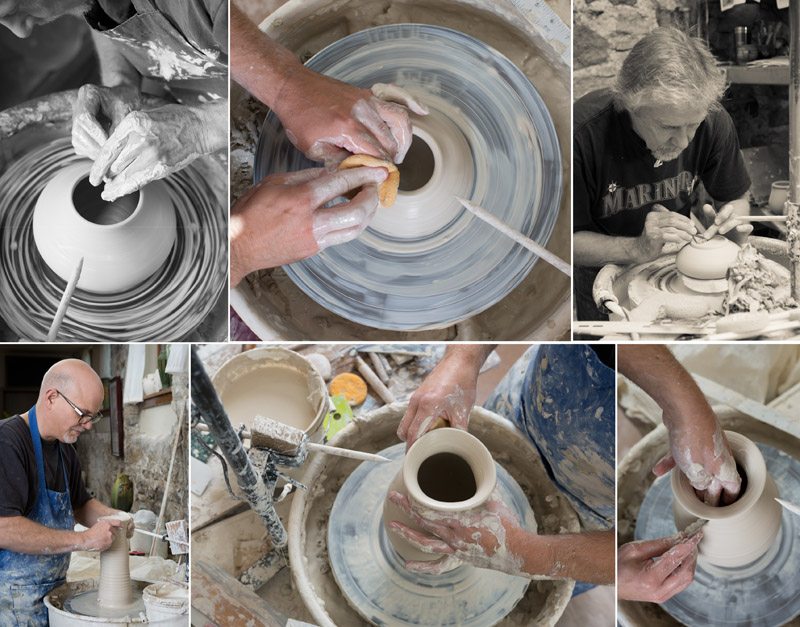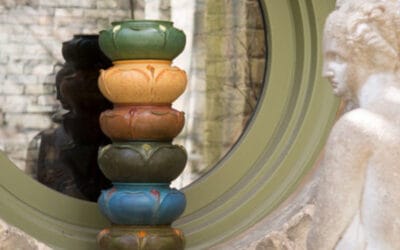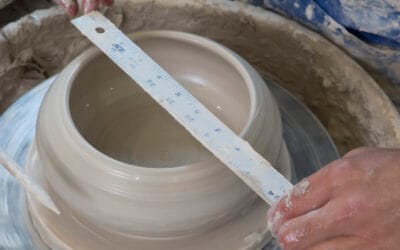Each ceramic piece that comes out of our studio is handmade. We value quality in craftsmanship and honor the traditional method of making ceramic art. Handmade to order allows us to waste very little time and materials and also to work as efficiently as possible within our current designs.
Here is look into our process:
1- A customer places an order through our website or over the phone. That’s right, it all starts with you! Our staff then creates a work order and the scheduling of the pottery begins.
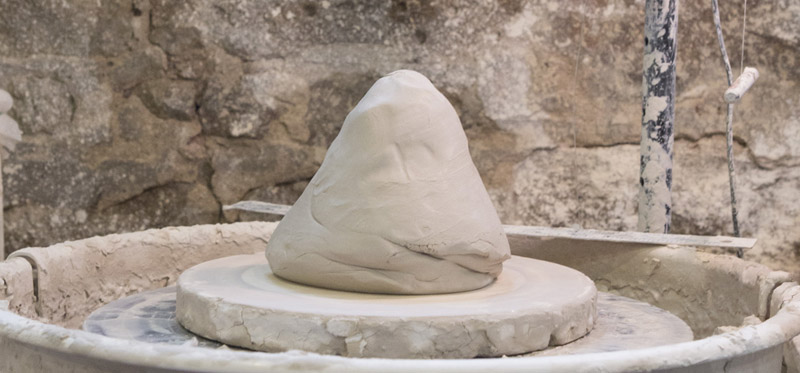
2- SMACK! A lump of clay hits the wheel and the form rises to life.
3- Once the form is achieved it is pulled off the wheel and moved to a drying rack where it spends roughly one day drying to “leather hard”. This time varies depending on the size of the piece and the humidity in the air. Our process changes along with the four seasons of our Wisconsin climate. The pots may need time in a tent to dry slowly or a gentle misting of water during the dry winter months.
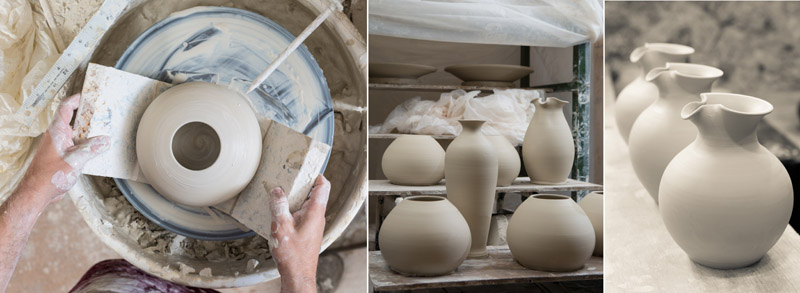
4- When the pots reach a workable firmness the sculpture is added. All decorative elements are rolled, drawn, cut and applied by skillful hands. We have several sculptors, each with unique talents. Ken is known for his exactness and symmetry, Laura for her organic, lively creations, and Kevin for his innovation & ability to precisely sculpt in a variety of styles. Our newest artist, Alek, is sure to add another dimension of creativity.
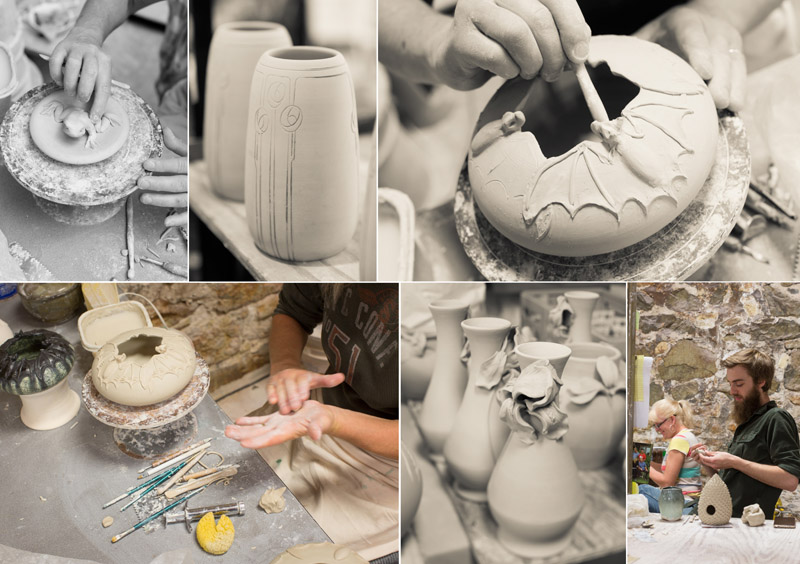

5-Once the sculpture is complete the piece takes another long rest to dry, perhaps under some plastic or a cute shower cap. Smaller pieces need 24 hours and larger pieces may require up to three days to dry evenly. If the piece is not thoroughly dried it will release steam during the bisque firing and break.

6- After drying the pieces are loaded into the kilns for the first firing which will transform them into bisque ware. The bisque firing and cool down time requires 36-40 hours in total. The bisque ware is then bright white and quite strong.

7- Bisque ware pieces then move to the hands of our glazers. The glaze is applied in varied series of steps. Typically the glazing goes as follows: dip the exterior of the pot in a 5 gallon bucket of glaze; pour glaze into the form to coat the interior; dump the excess glaze out; scrape or wipe away any areas where another color needs to be applied; with broad brush strokes layer on the glaze over the form to blend colors; apply the glaze with brushes to cover the sculpture and define the design.
Our glazers – Jennifer, Becky, Leah & Allison – work efficiently and with very steady hands. They each have a unique style which adds to the richness of the end result and our work as a collection.
Our glazes are custom made in house. The lab, where the glaze chemistry happens, is a very busy place. Because of changes in the availability of materials the glazes are frequently tested and modified to achieve optimal results. The work that is done in the lab is another example of how we are constantly striving to refine and improve our pottery.
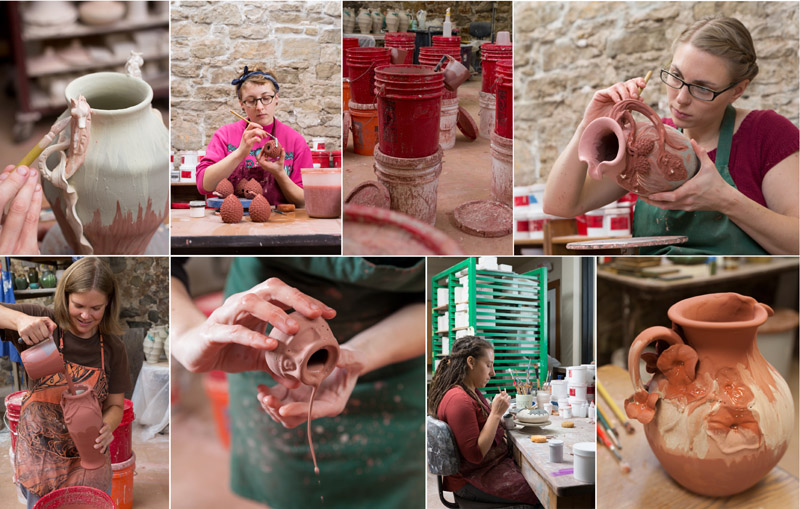
8- After the first layer of glaze is applied the piece returns to the kilns for a glaze firing, which takes as long as 24 hours with preheating, firing and cooling. We then open the kilns with great anticipation to see how the pieces look! Many of them will require second and even third consecutive glazings and firings to apply curdle, lustre, and/or crackle glazes which require our glazers to wait a day or two to see how well the pattern develops before a piece is ready to be fired.

9- Our signature glazes are designed to flow and drip off the bottoms of our pots, so we grind the foot of each pot to level it out.
10- The final step is to match the pottery with the original customer order and box it up for shipment. We cannot express to you how great it feels to have completed these pieces and to see them leave the studio for their forever homes.
From start to finish the process takes a minimum of 2 weeks and as long as 8 weeks. We push boundaries and experiment heavily along the way to keep our work exciting. Of course this means we experience a fair amount of error in our trials, but that’s part of the joy of ceramic art!
Thanks for taking this tour of our processes and for supporting American handmade ceramics.
Shop Ephraim Pottery

